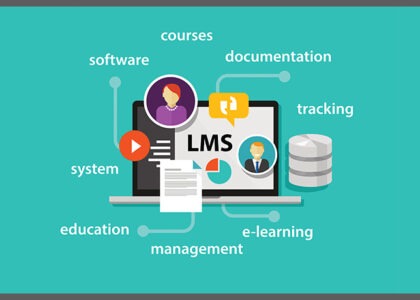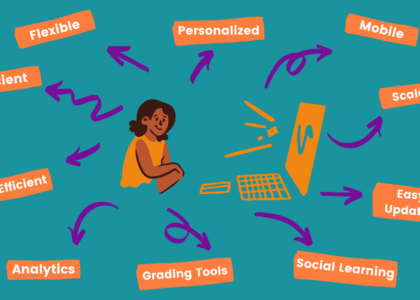How can Learning Management Systems (LMS) improve student performance ?
In a seminal contribution, researchers Ebardo and Valderama (2009) found that students who took a teacher’s class with access to LMS achieved better academic performance than those without.

This pivotal finding highlights how effective deployment of learning management systems can bear a glaringly positive impact on student performance.
BUT, WHAT IS A LEARNING MANAGEMENT SYSTEM?
Known by different names – course management system, content management system, e-learning system, virtual learning environment – learning management systems have completely transformed the mode of information delivery in classrooms, making learning activities all the more interactive and stimulating.
Primarily, they provide a networked and interactive user interface with advanced tools for teachers, students and the administration to deliver the curriculum, conduct assessments, execute classroom activities and automate administration.
While some institutions use an LMS to supplement traditional teaching, others have made a complete replacement.
Beside the reason of its positive impact on performance, institutions are compelled to adopt the software in the given time and age to evolve with the technological trends and cater to the changing student behaviours.

Now, how do they actually improve student performance?
LEARNING MANAGEMENT SYSTEMS (LMS) ENCOURAGE LEARNER AUTONOMY
As opposed to the traditional teaching method, where control is concentrated in the hands of the teacher, LMS encourages learner autonomy, allowing learners to claim more ownership of their learning and self-direct their progress.
What makes this possible?
Self-Paced Learning.
When course materials are made available for whenever-wherever student access, the reins of learning are naturally handed over to the students.
The major pay-off of learner autonomy is increased learner engagement and the instilling of the confidence and initiative to take charge of their learning choices.
LEARNING MANAGEMENT SYSTEMS CONSOLIDATE ALL INFORMATION IN PLACE
From lecture delivery to drawing insights from student performance to tracking student enrolment, learning management system provides a single all-in-one centralized location to carry out all activities related to education.
This eliminates the inconvenient scenario of having information spread out across resources.
Also, such consolidation and availability pave way for convenience and the liberation of time spent on information search on part of the students and teachers. This, in turn, allows them to focus on work that truly matters and deliver greater results
LEARNING MANAGEMENT SYSTEMS FOSTERS SEAMLESS COLLABORATION
Learning is best done collaboratively, rather than in silos. This collaboration must prevail between students as well as between students and teachers.
By providing an interactive digital environment, learning management systems make social learning a successful reality, which will inevitably enhance student performance.
Learning management systems can easily track learner progress
The reporting and analytics feature of an LMS plays a pivotal role in deriving insights into student performance and making necessary recommendations.
Teachers can pinpoint the areas students are lagging and provide supplemental materials as required; identify trends and patterns in student performance to spot learning modules that need a revisit or redesign.
LEARNING MANAGEMENT SYSTEMS PERSONALIZE LEARNING
A big difference between traditional teaching methods and an LMS is while the former relies on a one-size-fits-all concept, the latter affords teachers the platform to customize lesson delivery and give focused feedback on performance.
Personalized learning solutions enable students to reflect more deeply and locate specific areas for further improvement.
Learning management systems facilitate multiple methods of assessments
Rather than resorting to conventional modes of assessments, an LMS allows teachers to conduct interactive assessments like discussions, quizzes, essays and so on, at scale.
A multi-pronged way of testing will help teachers assess the proficiency of learners accurately.
LEARNING MANAGEMENT SYSTEMS SPEED UP FEEDBACK ON PERFORMANCE
The sooner the feedback arrives the faster the student is on track. In a conventional setup, a teacher would be forced to manually grade papers, which can be a time-consuming and labour-intensive task. With an LMS however, teachers can automate grading by inputting criteria, freeing up their time for work that concerns actual learning.
As for students, receiving instant feedback will not have them wait around, and rather set them off to action to diagnose their downsides and improve
Overall…
The pandemic changed the educational landscape in more ways than one. The way it hastened up technology adoption across institutions is unprecedented and irreversible. It can be surmised with the assertion that learning management systems are here to stay, not just for technological advancement reasons, but also for the unshakeable evidence that they indeed improve student performance and engagement.
When you’re choosing an LMS, it’s important you choose a software solution that promises the best technology-student fit.
Payil, by Nila Apps, is an LMS solution that checks all the boxes, empowering students, teachers and administrators alike to deliver above expectations.





